Dinengdeng na saluyot at labong is ready in under an hour and makes a hearty and nutritious meal. This Ilocano dish is made with mixed vegetables, and grilled or fried fish simmered in a flavorful broth of fermented fish and onions.
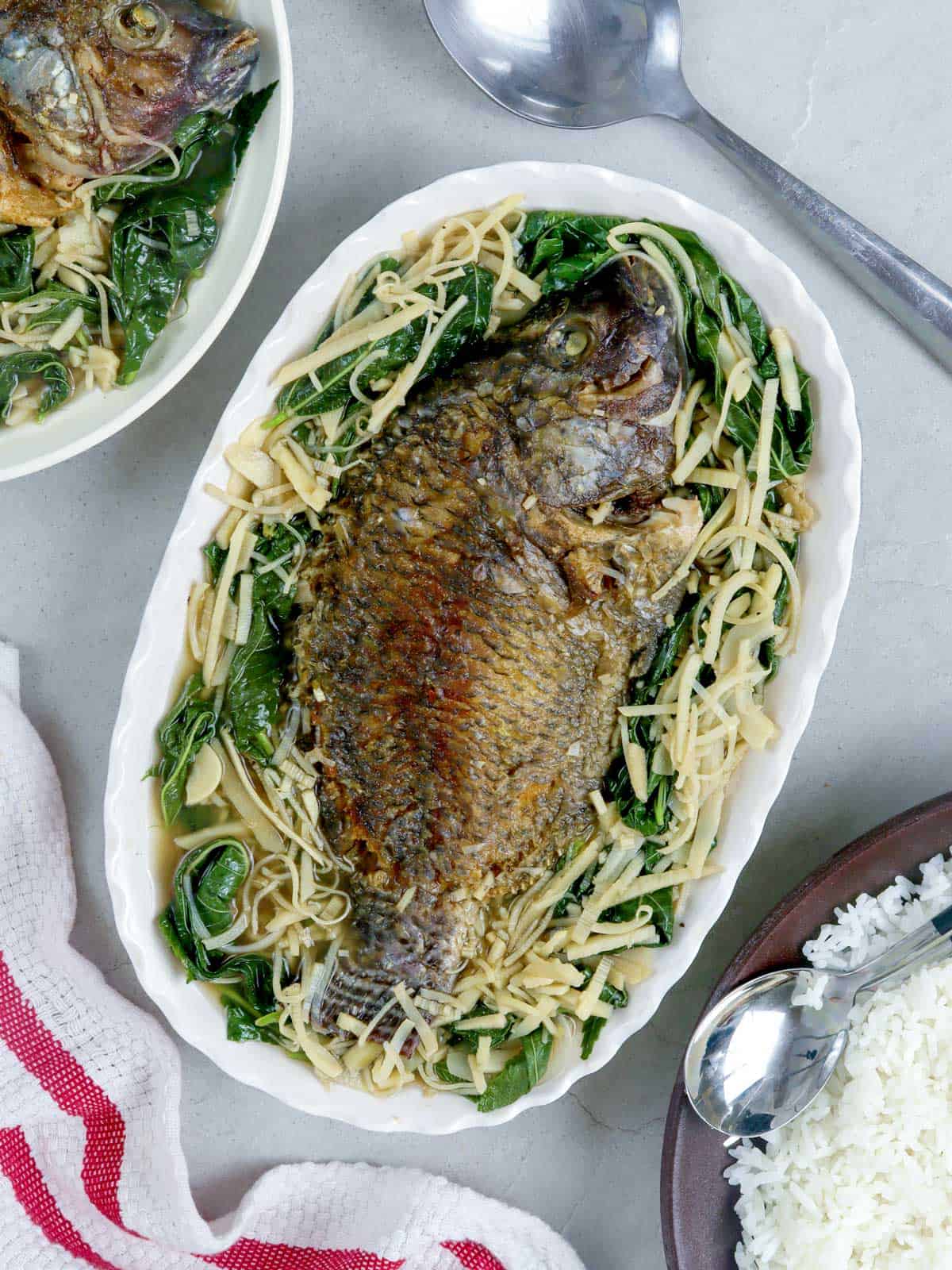
Also referred to as abraw or inabraw, dinendeng is a provincial style of cooking from the Northern regions of the Philippines, specifically, Ilocos. It involves a simple process of boiling vegetables in a broth seasoned with fermented fish sauce. Grilled or fried fish is also added at the end of cooking to heighten flavors.
Its name is derived from the word idengdeng, which means "to strain," as the bagoong monamon is usually strained to extract the fermented juice from the small fish pieces in the anchovy sauce.
Ingredient notes
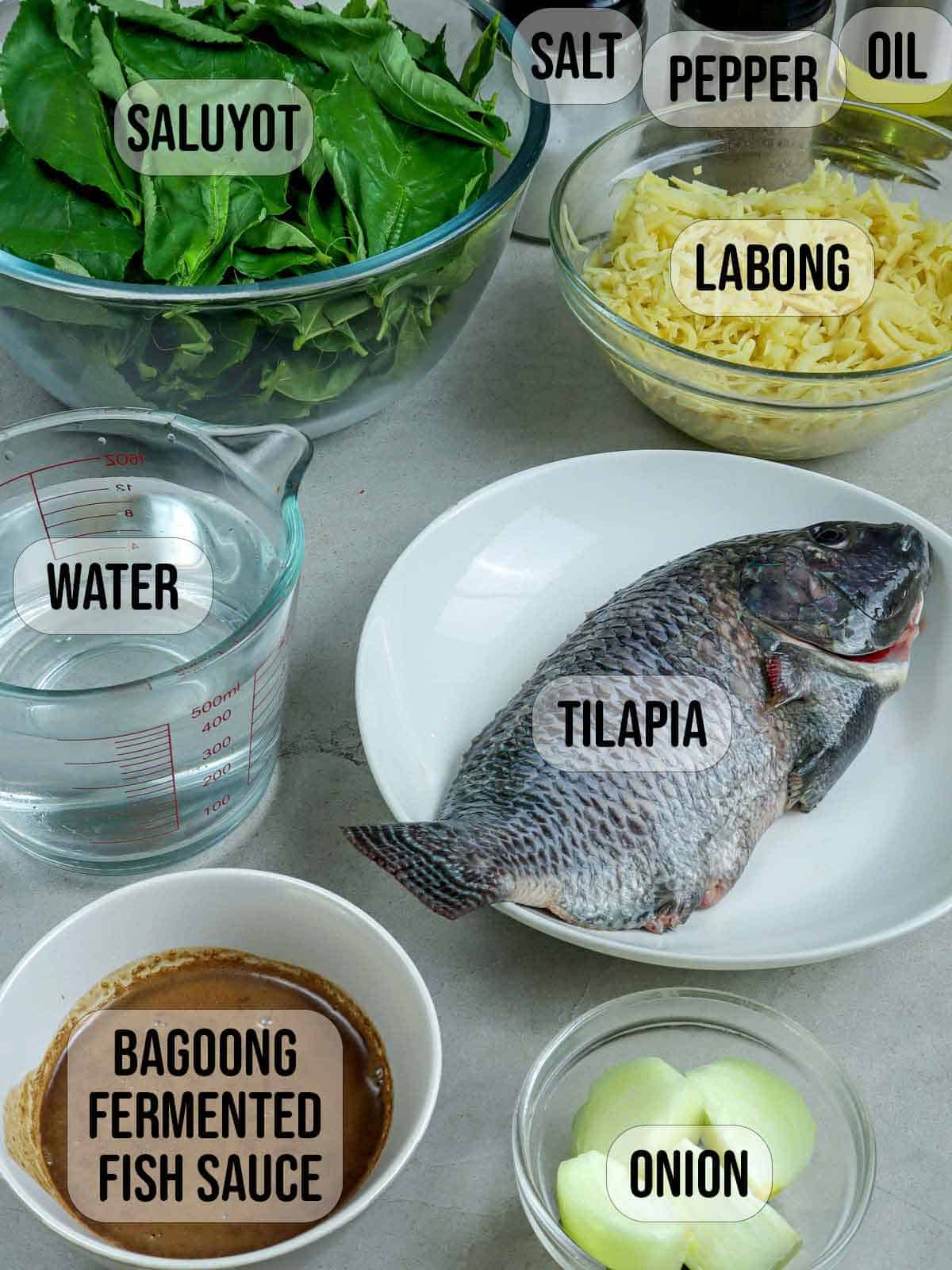
Like pinakbet, there is no straight rule of what vegetables to include in inabraw as home cooks usually use whatever fresh produce is abundant in the area. While vegetables such as ampalaya, kamote tops, alugbate, lima beans, eggplant, wing beans, and squash flowers are delicious additions, this recipe is a simple affair of labong and saluyot.
- Fish - the recipe uses tilapia, but any firm-fleshed fish such as bangus, pompano, and galunggong will do. You can also try shrimp or tinapa.
- Oil- use oil with a neutral taste and high smoke point suitable for deep-frying, such as canola, avocado, or safflower oil
- Labong- young bamboo shoots. Are sold whole, already peeled and julienned, or canned.
- Onion- adds flavor
- Bagoong Monamon- also known as bagoong isda or fermented fish sauce
- Saluyot leaves- also called jute mallow, a leafy vegetable known for its mucilaginous properties.
- Salt and pepper- enhance the flavor.
Adding fish
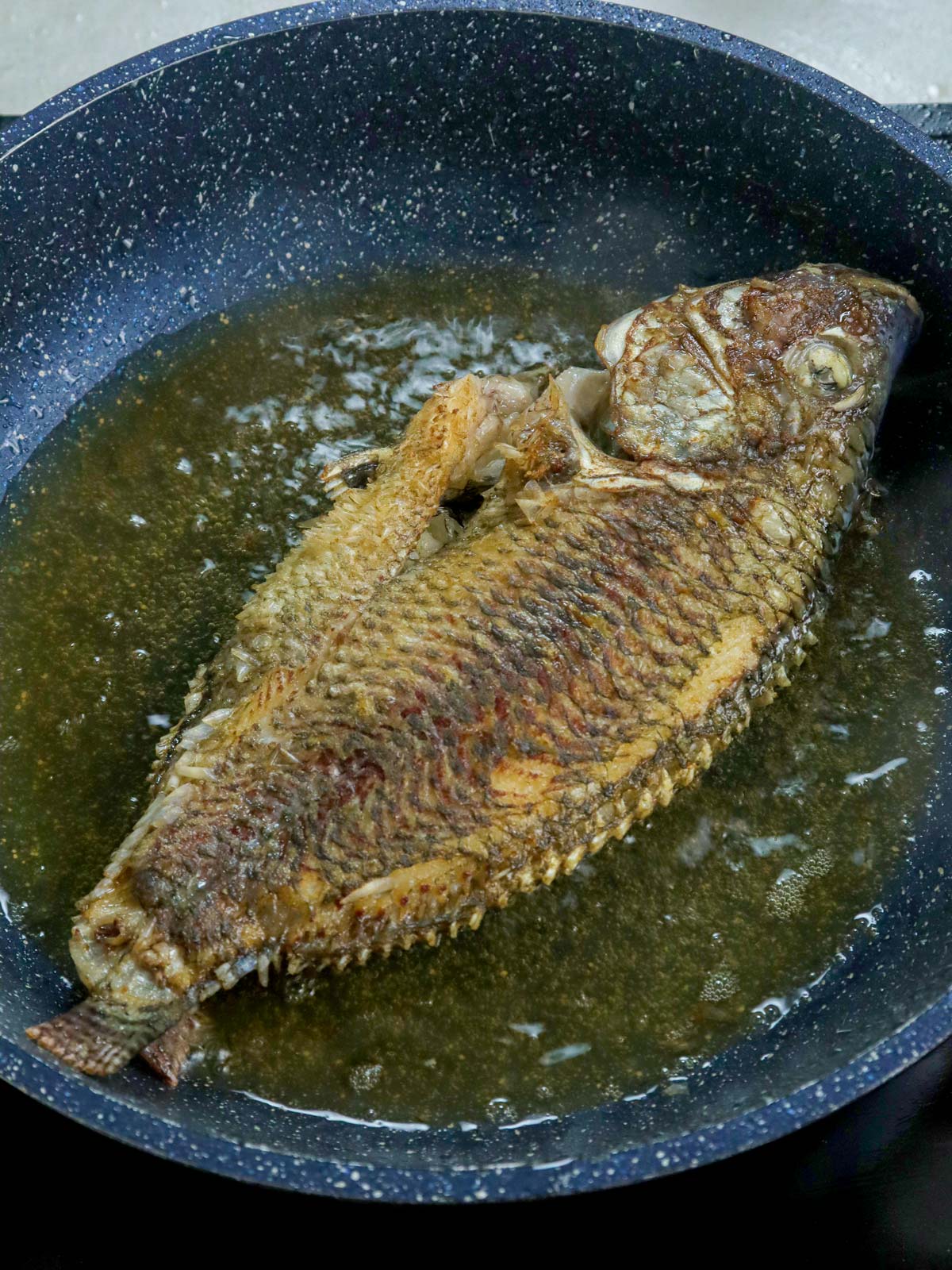
You can grill the fish for a smoky taste or fry for more texture. Some prefer to serve the denengdeng topped with cooked fish. I like to add and simmer the fish in the broth during the last few minutes of cooking time to infuse the dish with flavor.
Preparing labong
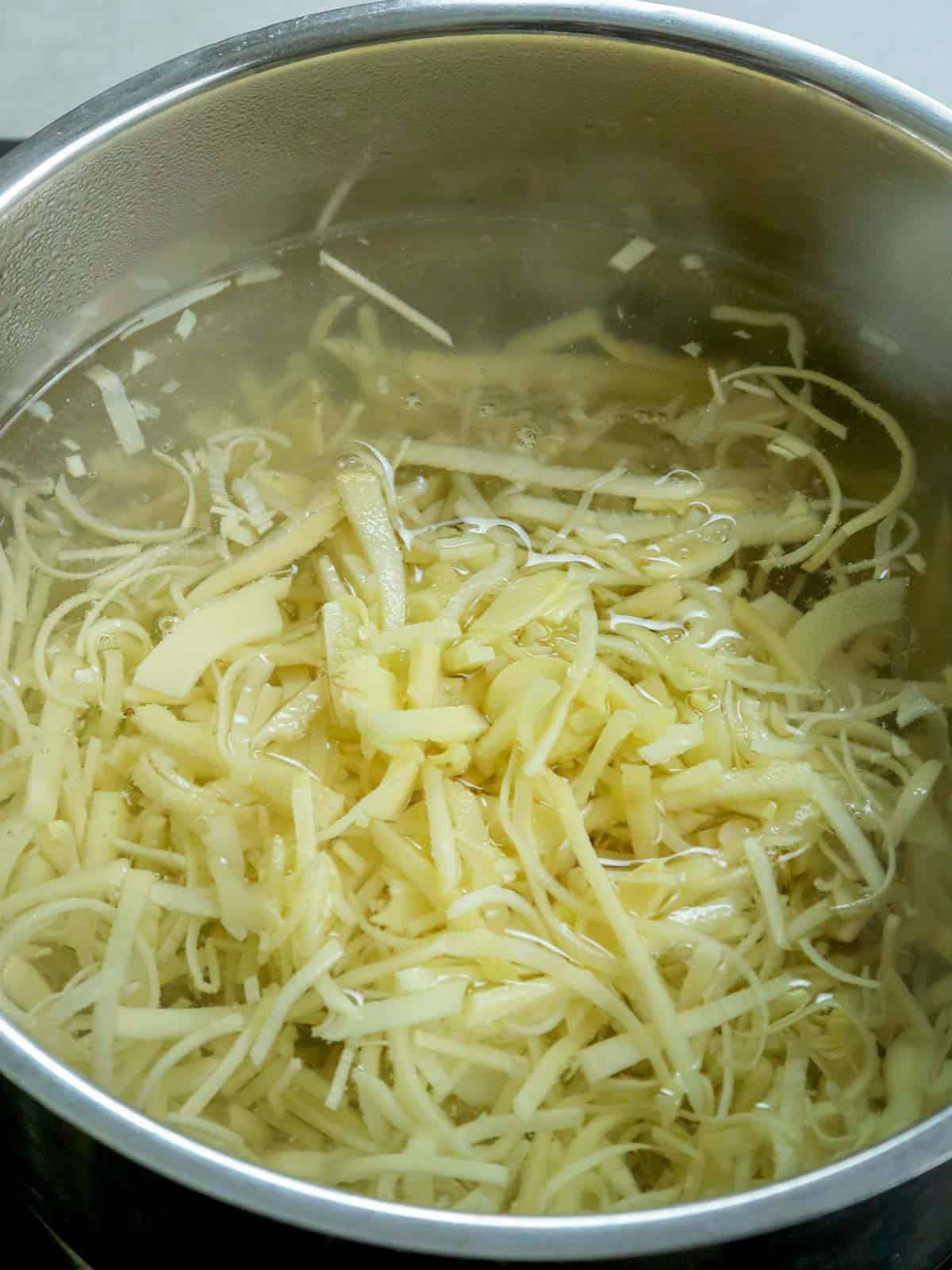
Raw bamboo shoots contain cyanogenic glycosides, which are part of the plant's defense mechanism and can also be found in lima beans, cassava, almonds, or sorghum. Cutting the labong into small pieces and boiling it in water reduces this natural-occurring toxin. Commercial canning processes also rids of this chemical, making the food safe for consumption.
Dinengdeng na saluyot at labong cooking steps
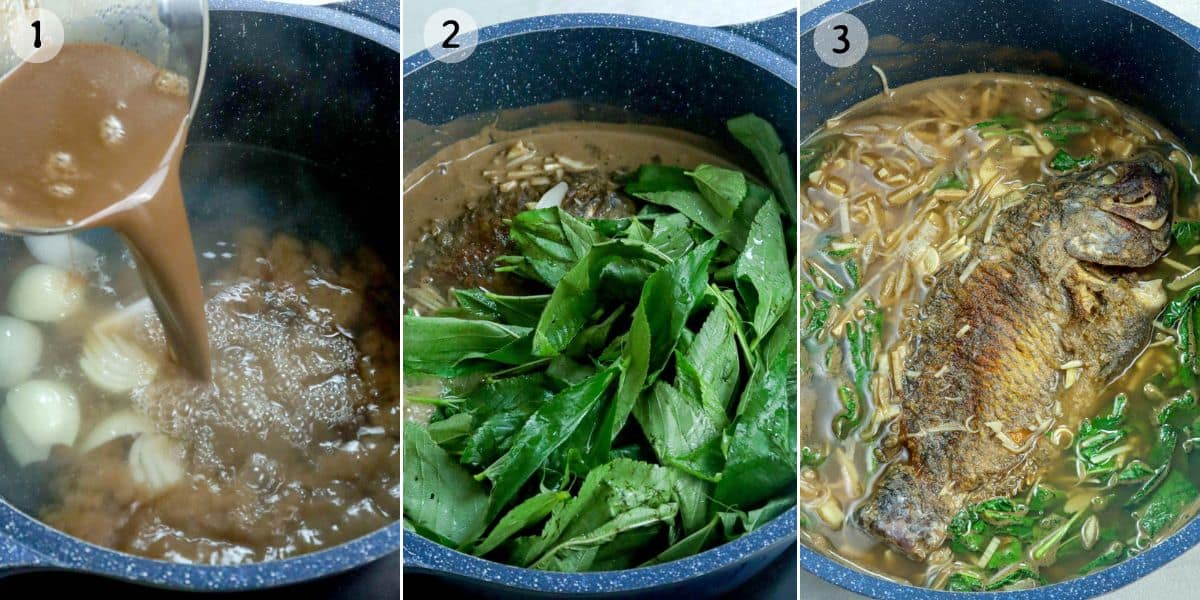
Cooking tip
Cook the jute leaves just until wilted as overcooking can make them bitter-tasting.
Frequently Asked Questions
How many calories are in dinengdeng?
Calories in dinengdeng vary depending on the ingredients and preparation mode. The estimated calories per serving for this specific recipe is 151 KCAL.
Is eating bamboo shoots good for you?
Labong or bamboo shoots are nutrient-packed foods rich in protein, fiber, vitamins, and minerals while low in fat.
What are the edible parts of the saluyot?
The leaves and tender stems of the jute mallow are edible and cooked mainly as a vegetable in stir-fries, stews, and soups.
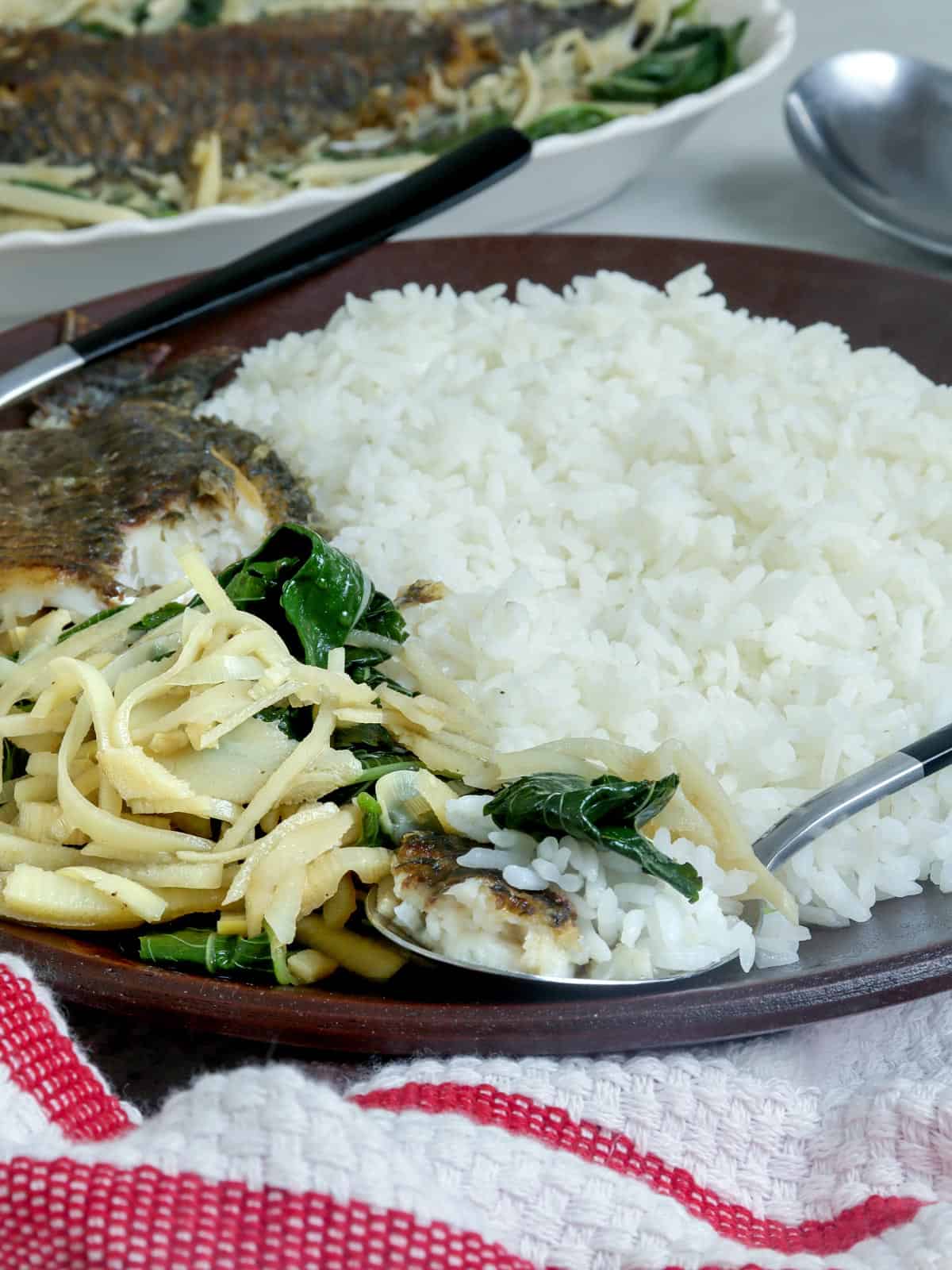
How to serve and store
- Serve this abraw na saluyot at labong as a delicious main dish with steamed rice for lunch or dinner.
- Allow leftovers to cool completely and transfer to a container with a tight-fitting lid. Refrigerate for up to 3 days.
- Reheat in a saucepan to 165 F or microwave at 1 to 2-minute intervals until heated.
More vegetable recipes
Ingredients
- canola oil
- 1 tilapia, cleaned and gutted
- water
- 2 cups labong, julienned
- 1 onion, peeled and quartered
- ½ cup bagoong monamon (fermented fish sauce)
- 1 bunch saluyot, leaves separated from stems (about 4 cups leaves)
- salt and pepper to taste
Instructions
- In a pan over medium heat, heat oil. Add tilapia and fry, turning once or twice, until golden and cooked through. Remove from pan and drain on paper towels.
- In a pot over medium heat, bring enough water to cover to a boil. Add labong and cook for about 20 to 25 minutes. Drain well and discard the liquid.
- In another pot over medium heat, combine 5 cups of water and onion. Bring to a boil.
- In a bowl, combine bagoong with ½ cup of the boiling water. In a fine mesh strainer, strain bagoong to extract juice and discard small fish particles from the bagoong.
- Add the bagoong sauce into the pot. Lower heat to simmer.
- Add the labong and continue to cook for about 7 to 10 minutes or until tender.
- Add fried fish and cook for another 3 to 5 minutes to slightly soften and infuse flavor.
- Add saluyot leaves and continue to cook for about 2 to 4 minutes or until just wilted.
- Season with pepper to taste. Serve hot.
Notes
Nutrition Information
“This website provides approximate nutrition information for convenience and as a courtesy only. Nutrition data is gathered primarily from the USDA Food Composition Database, whenever available, or otherwise other online calculators.”

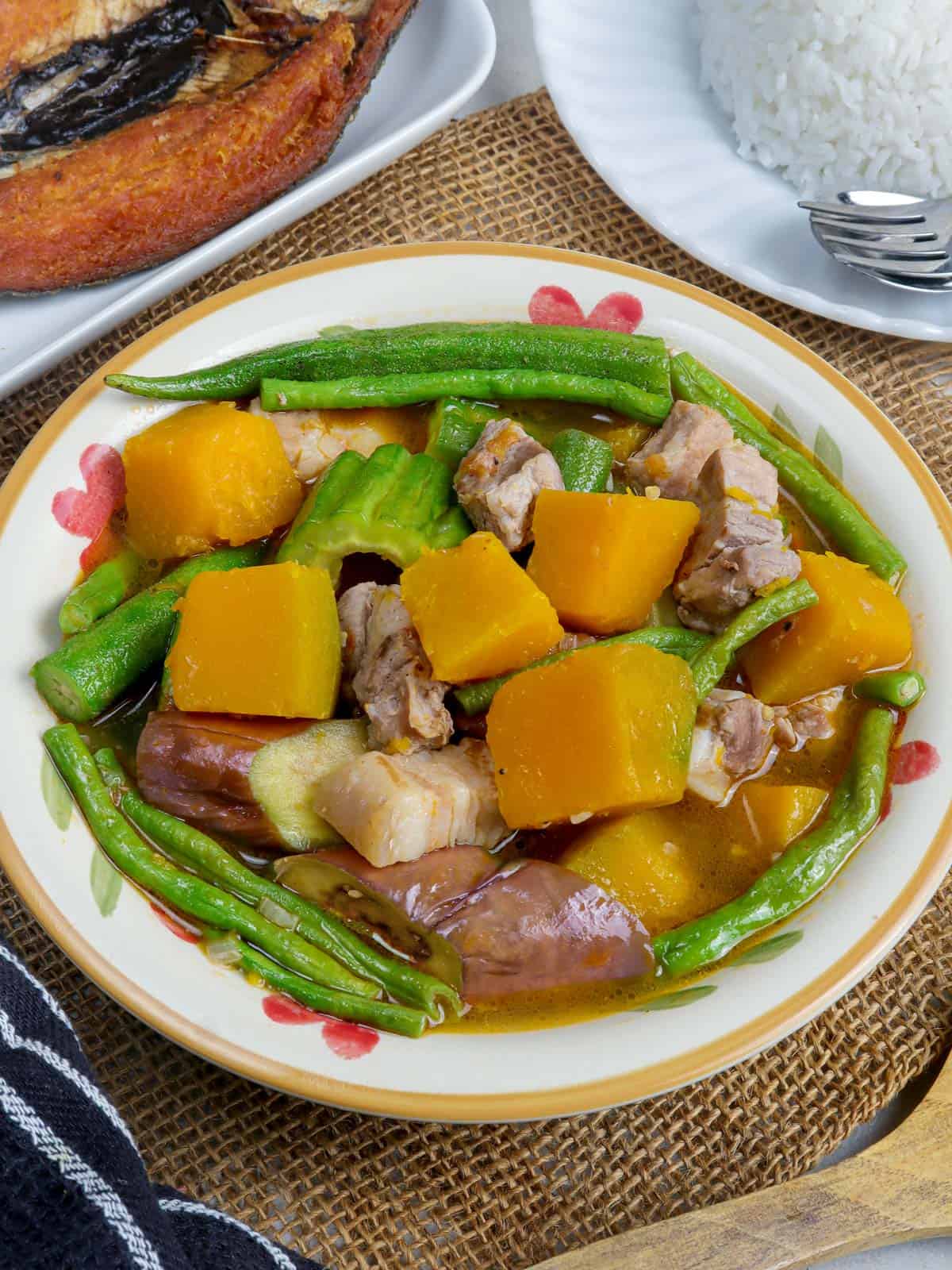
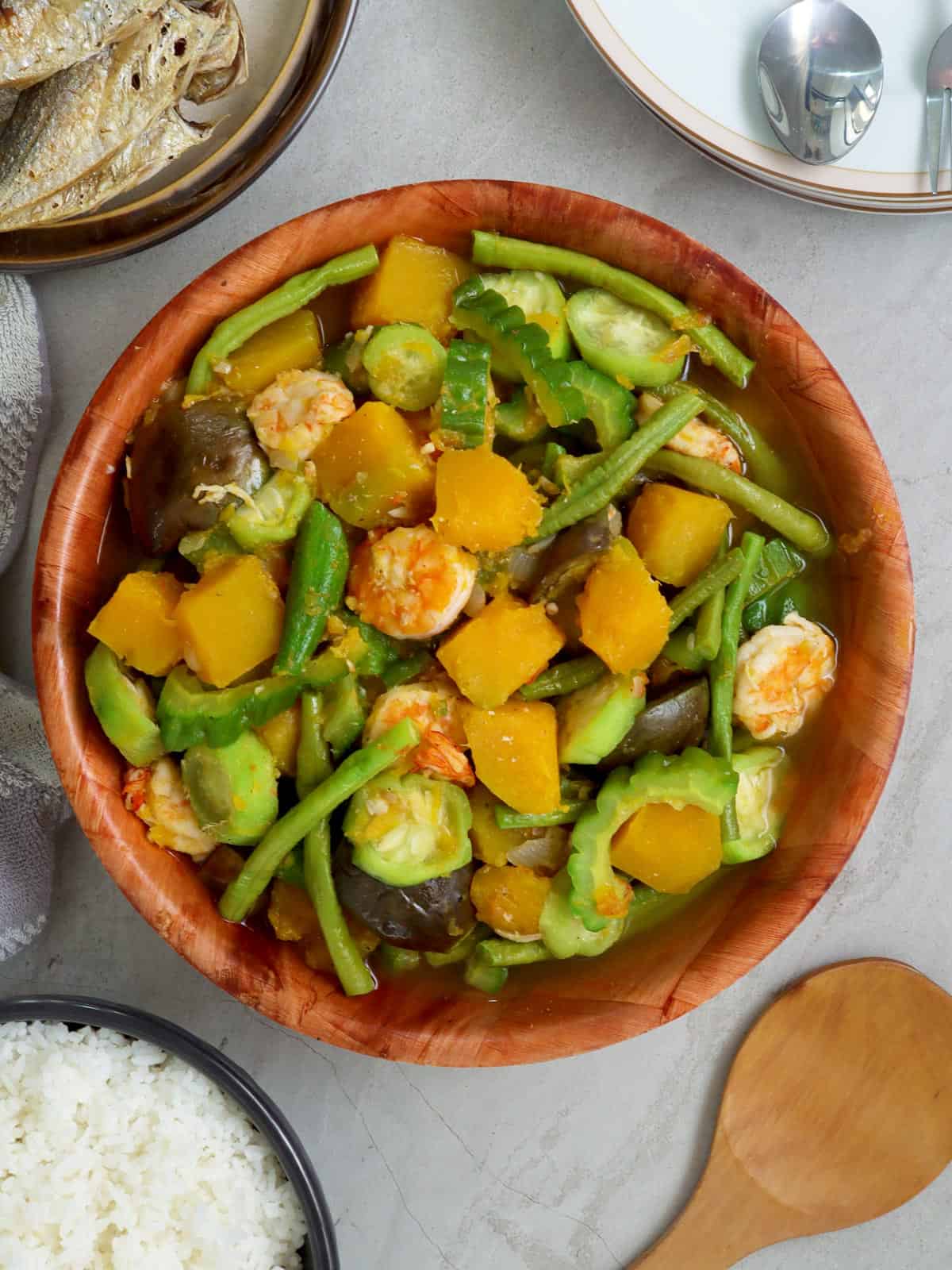
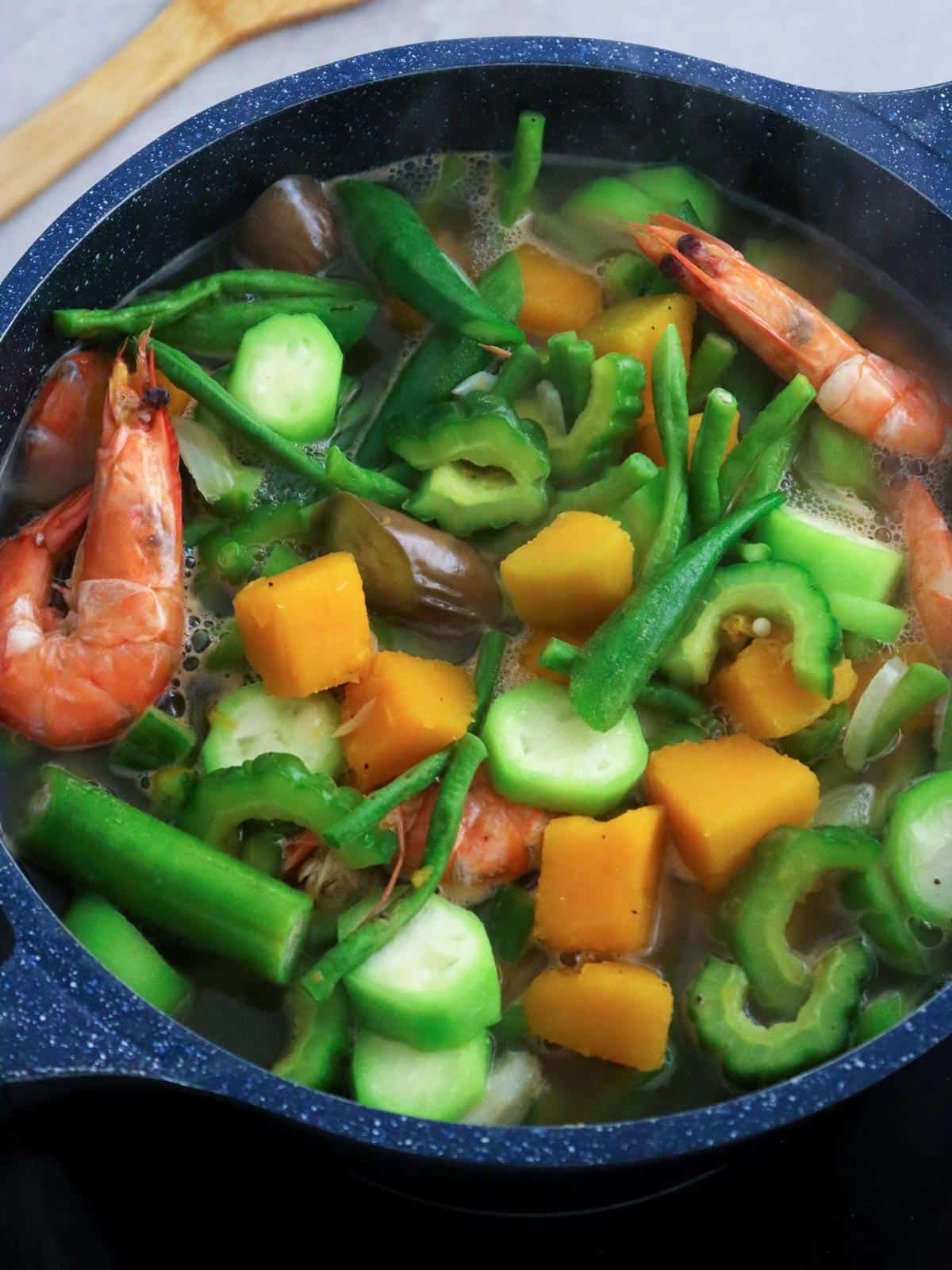
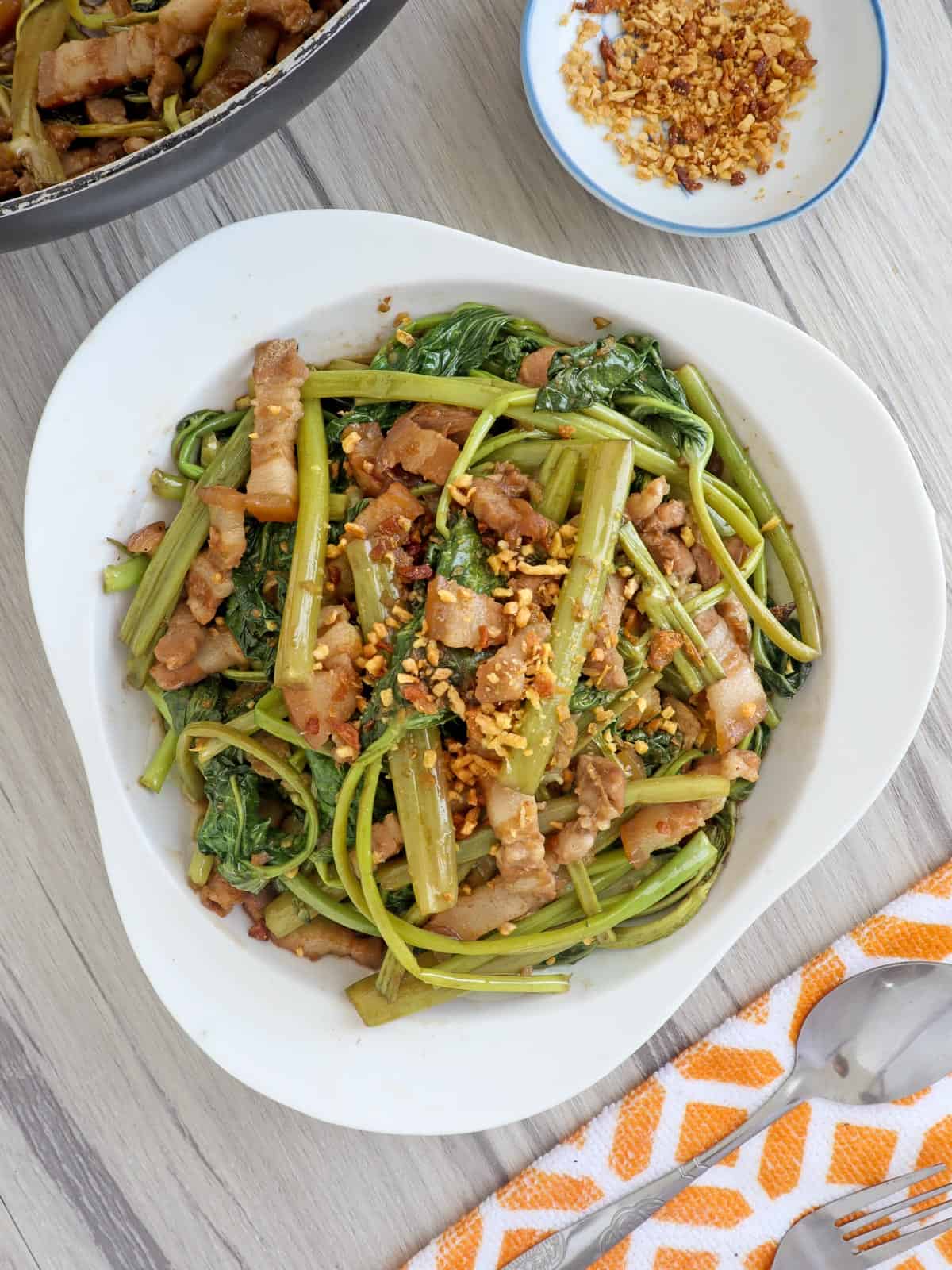
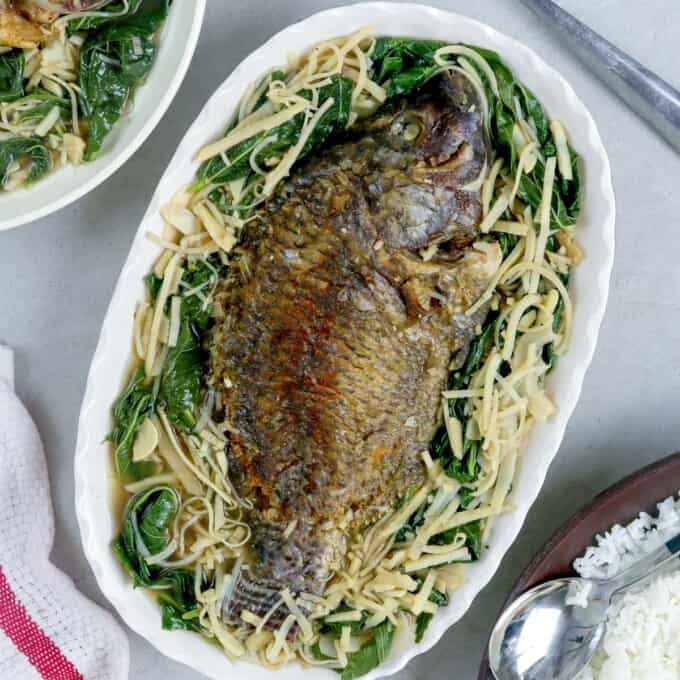
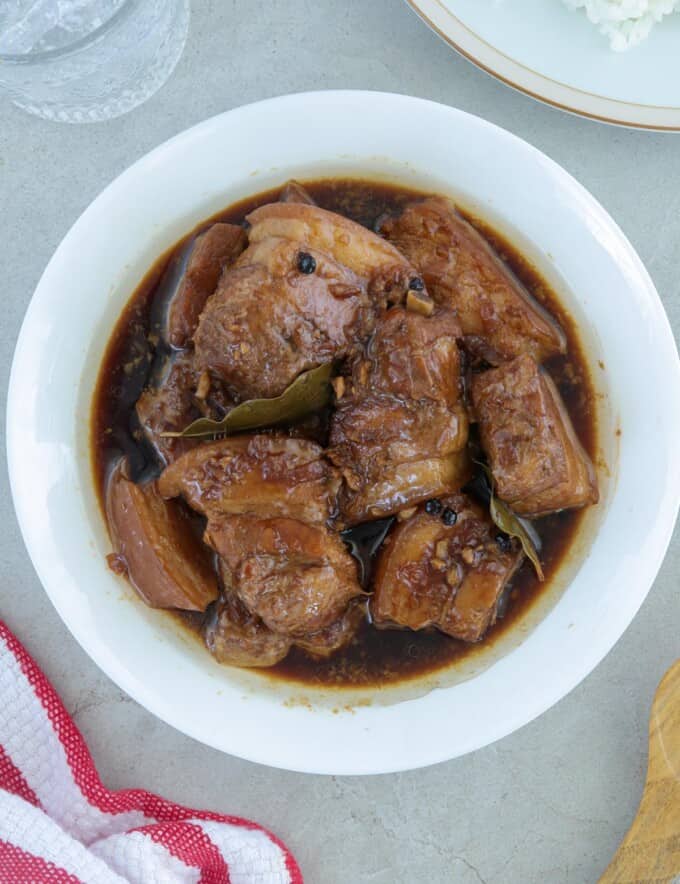
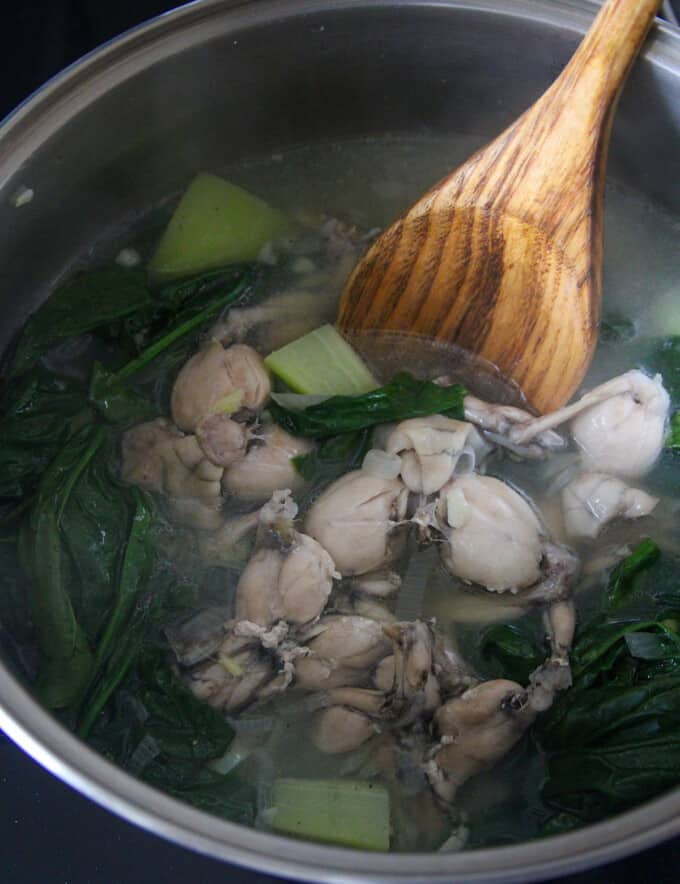
Precyde Ragay says
If fresh labong not available what is a good can labong can use and the nutrients are still on the labong.
baby says
What brand of bagoong and labong is good? Usually labong has funky smell unlike the labong sold in the market kasi fresh.
Felipe Nazareno says
I have always referred to your recipes especially dishes that I grew up eating. Now, in Montréal I find fresh veggies for dinengdeng. Your simple easy instructions helps me hone my ability to make the dishes with great results. Thank you and keep up the good work you are doing.
Jane says
Hello, dapat po bang malambot yung bamboo shoot after cooking or is it medyo crunchy?
Dinah says
So, nagrequest yung husband ko ng labong, which his mom used to cook (kasi Ilocano). and siempre hindi ako marunong! thanks talaga for your blog, hahahah!
Lalaine says
Haha, glad to be able to help Dinah 🙂
Lalaine says
Glad to help 🙂
chinablue says
Simple and yet delicious!
Lalaine says
Yes, it is 🙂
ArisG says
Thanks for this recipe!
Lalaine says
Hello Aris
I hope you give this a try. One my favorite dishes, it's delicious and nutritious 🙂